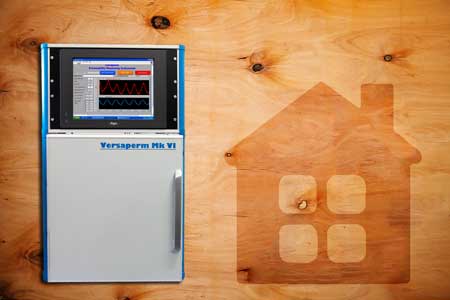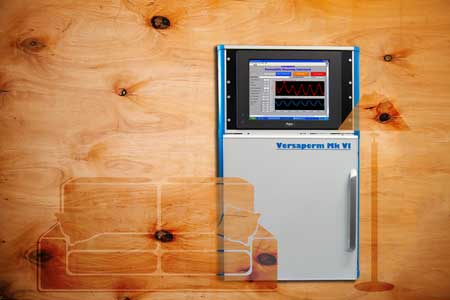



Click
on the image to download a print quality scan
Plywood is used extensively in the building, furniture, packaging and fencing industries due to its size, strength and water resistant core. However, although resistant to liquid water, water as vapour can pass straight through it and condense on the other side of the panel, or even between the panel layers. This can cause serious problems such as de-lamination or weakening - especially when is used structurally in furniture, walls, roofs, floors or outside areas.
Traditionally this permeability is measured using the ASTM Method E96 – but this takes days or weeks to produce a single measurement. Versaperm's highly accurate vapour instrumental equipment can reduce this down to as little as 30 minutes for some materials.
The vapour permeability of ply not only varies depending on the type, thickness and coating used on the material but also can be 15 - 20 times higher when wet than when measured when dry. It also varies with temperature and is affected by the daily diurnal changes.
The Versaperm equipment uses modern instrumental and sensor techniques and it can measure the permeability both quickly and accurately under a wide range of environmental conditions. It can also measure the vapour permeability for gases and hydrocarbon vapours.
Plywood veneers usually contain lathe checks that were produced during the manufacturing process. These small cracks provide pathways that allow vapours to pass through when entering through the panel edge. Without vapour permeability checks this can cause the ply to weaken drastically or even split along its laminations.
Versaperm also offers a vapour permeability laboratory service for companies which only need to test samples on an irregular basis.
ENDS
* The ASTM Method E96 is based on measuring the very small change in weight of a desiccant which was placed on the far side of the marine ply to capture any moisture that passes through.
Please send any sales enquiries to
Versaperm Ltd: 10 Rawcliffe House, Howarth Road, Maidenhead, Berkshire, SL6 1AP, UK,
e.mail: info@versaperm.com Web: www.versaperm.com
UK Tel: +44 (01628) 777668
USA Tel +1 (617) 855-7477
For Further Press Information please contact:
Gerry Palmer @ the Palmer & Rose Partnership
Tel 01494 637499
e.mail gerry@palmer-rose.co.uk